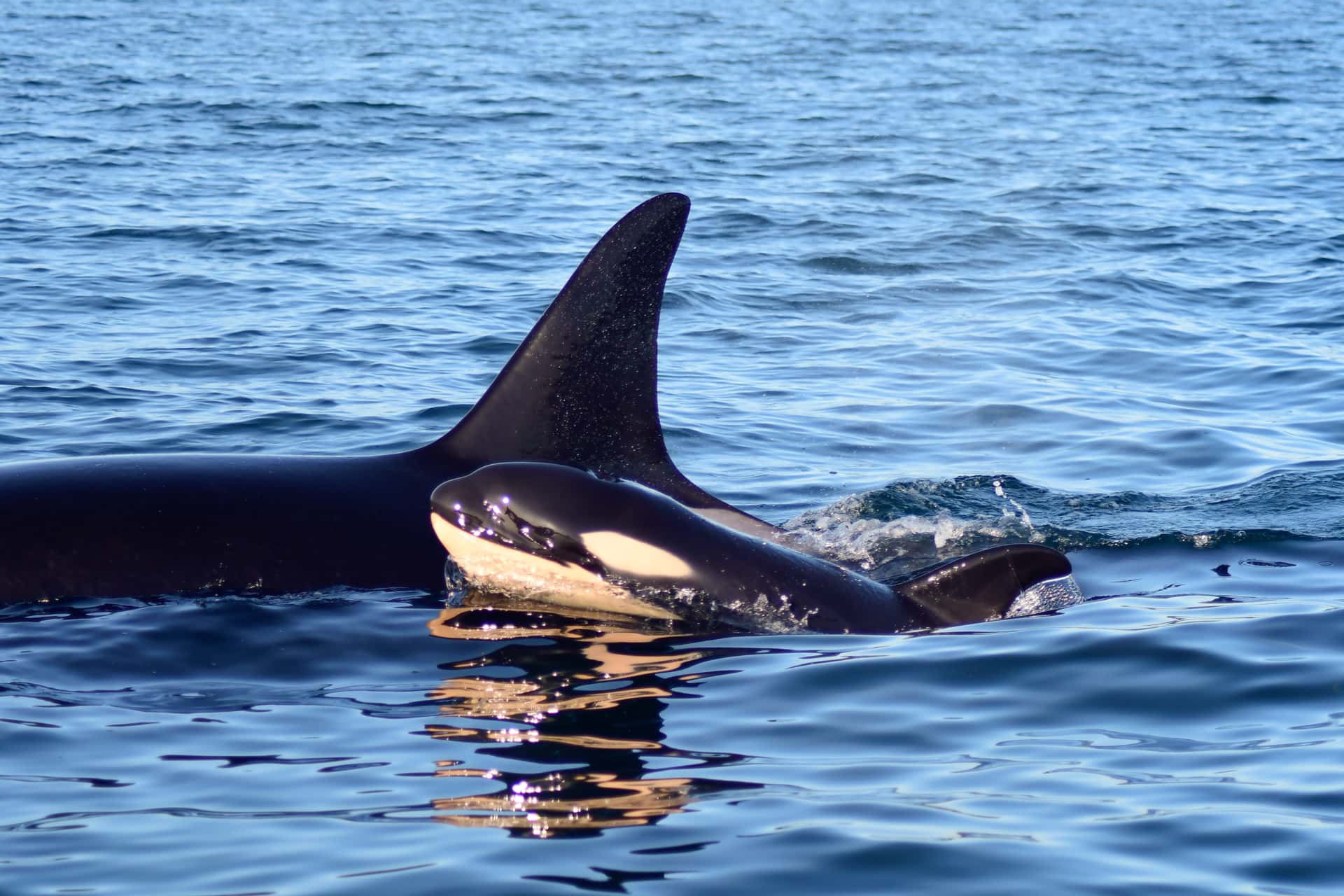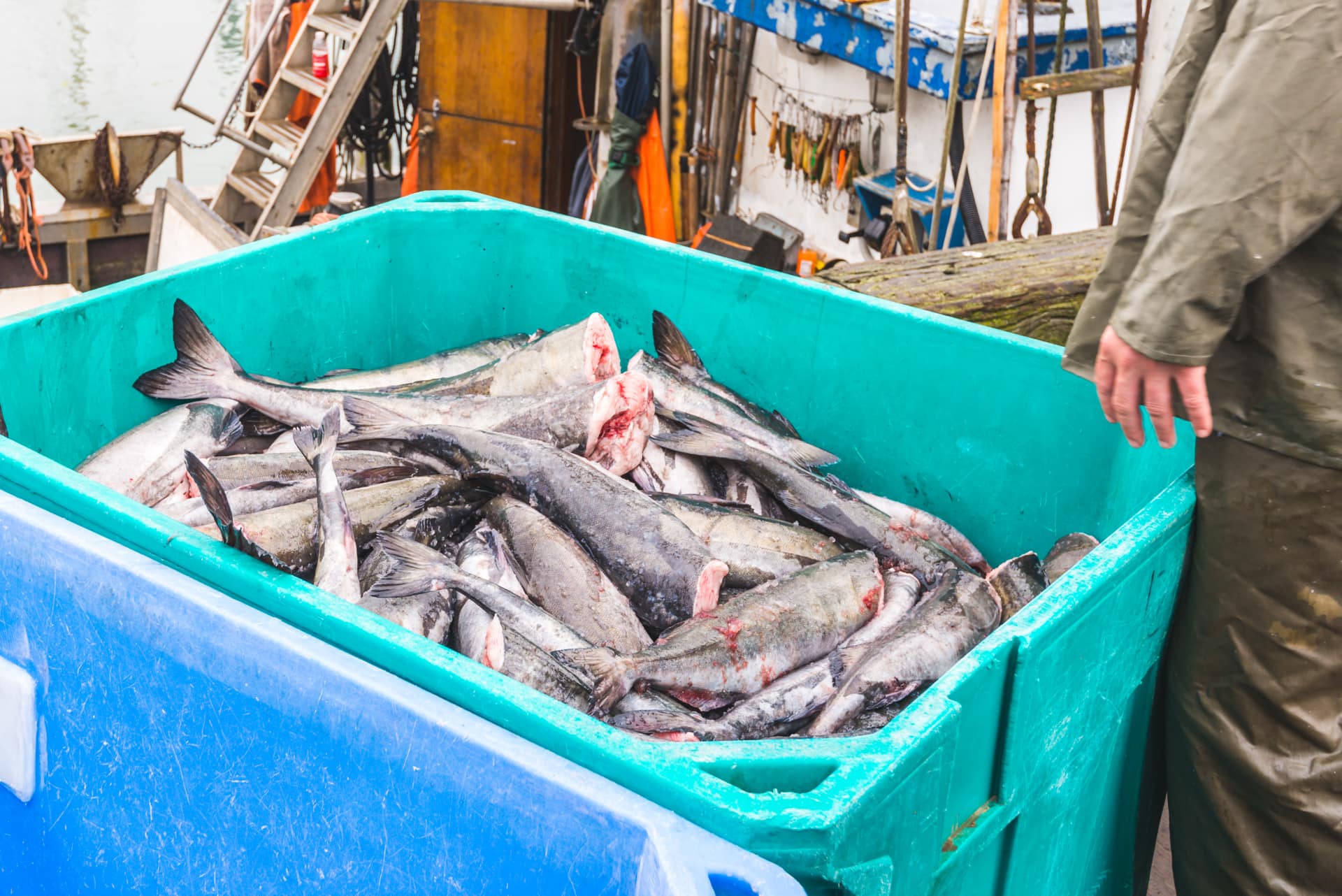
In his tragically short life, J60 was at first a source of hope—as all new calves are to this endangered population. Then hope was swiftly followed by concern, as researchers saw him with three different females over the next few days when only one could provide him with the milk he needed to survive.
We may never know why J60 was first seen with J40 Suttles and not with his later-presumed mom, J42 Echo, who researchers identified as pregnant in 2023. Or how she came by the fresh rake (teeth) marks around her saddle patch—was it a difficult birth?
Yet, if J60 was J42’s calf, this was not, in fact, her first pregnancy. Aged 17, J42 might have had two calves by now, and hormone samples collected by Dr. Giles in 2018 suggested she was pregnant but subsequently miscarried.

A team of researchers photographs J60 in the Puget Sound on December 26, 2023.
In a 2017 publication, the University of Washington showed that when Chinook salmon was scarce, 69% of Southern Resident killer whale pregnancies ended in miscarriage due to malnutrition. Given the ongoing decline in Chinook salmon, Wild Orca intends to update this vital research. By collecting fecal samples, we can measure hormonal changes that indicate how far along a pregnancy is or detect a miscarriage in a known pregnant whale.
However, we already know that miscarriages are still all too common. In fact, J40 likely lost a pregnancy this year, and this may account for her interactions with newborn J60. Losing any pregnancy is tragic for this endangered population, but perhaps of greatest concern is how many calves are lost close to birth.
The 2017 study found that half of all pregnancies were lost in the later stages, and this alarming trend continues. Since 2020, scientists have identified nine whales in “late-stage pregnancy” but have not seen any with a new calf. However, we don’t know if they died before birth or shortly after, like J35 Tahlequah’s calf.
Dr. Giles describes some of these females as “chronically pregnant.” For example, scientists reported that L72 Racer was in the later stages of pregnancy in both 2020 and 2021 and then again in 2022, when Washington State listed her as “vulnerable.” Her last known calf was born in 2010 but died shortly after birth.
J36 Alki has been pregnant at least twice in the last few years and, in 2021, was said to be “very close to birth,” but scientists did not see her with a calf. Due to another late-stage pregnancy in 2023, she was also listed as “vulnerable” by Washington State. Sadly, it seems she lost the pregnancy later in the year.
Not only do these late and repeated losses put incredible strain on the physical health of these females, but the psychological toll will be significant, not just for mom but for her entire family. In addition, the government does not factor in miscarriages when assessing the health of this population; only successful births are accounted for. Yet these losses are the canary in the coal mine as indicators of a failing ecosystem with too few Chinook salmon.
While we may not solve the mystery of J60’s birth, no mystery surrounds his death or the miscarriages. The government must urgently account for all these calves and assess this population’s actual Chinook salmon needs to survive and thrive.





